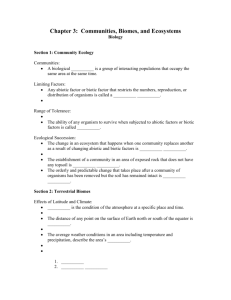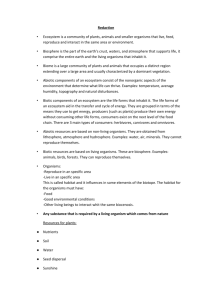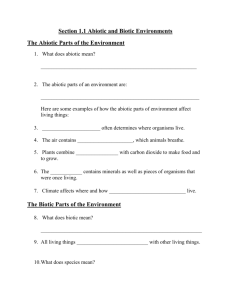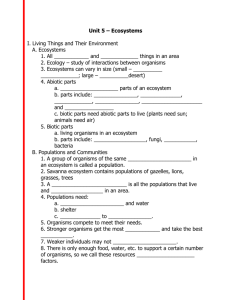Ecosystems
advertisement
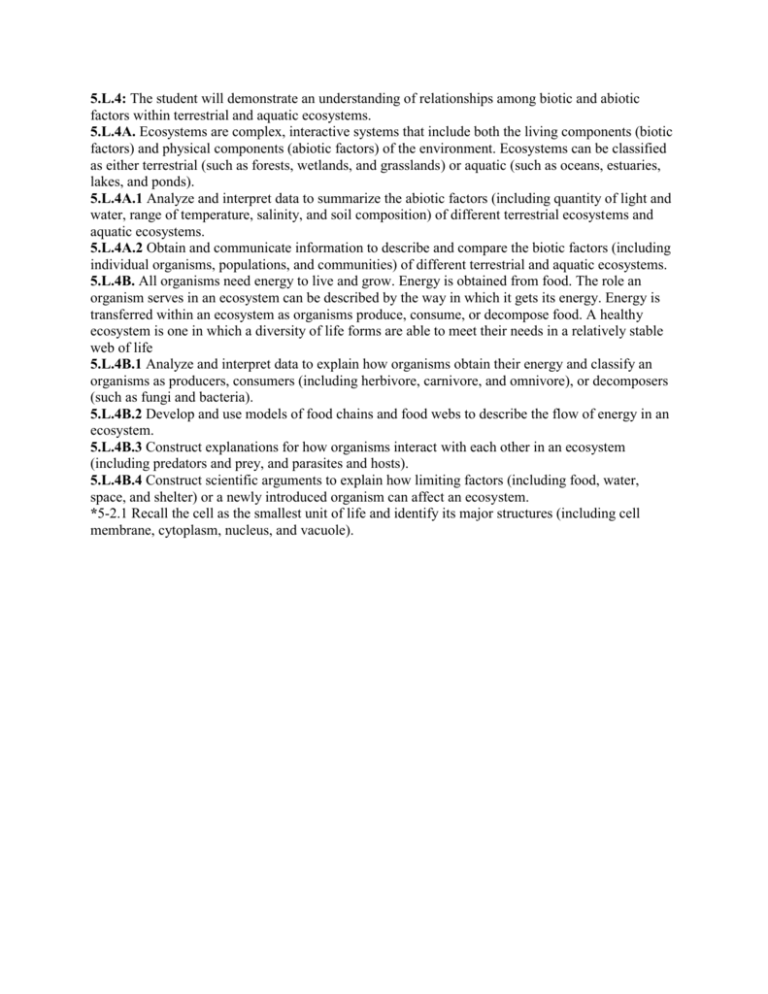
5.L.4: The student will demonstrate an understanding of relationships among biotic and abiotic factors within terrestrial and aquatic ecosystems. 5.L.4A. Ecosystems are complex, interactive systems that include both the living components (biotic factors) and physical components (abiotic factors) of the environment. Ecosystems can be classified as either terrestrial (such as forests, wetlands, and grasslands) or aquatic (such as oceans, estuaries, lakes, and ponds). 5.L.4A.1 Analyze and interpret data to summarize the abiotic factors (including quantity of light and water, range of temperature, salinity, and soil composition) of different terrestrial ecosystems and aquatic ecosystems. 5.L.4A.2 Obtain and communicate information to describe and compare the biotic factors (including individual organisms, populations, and communities) of different terrestrial and aquatic ecosystems. 5.L.4B. All organisms need energy to live and grow. Energy is obtained from food. The role an organism serves in an ecosystem can be described by the way in which it gets its energy. Energy is transferred within an ecosystem as organisms produce, consume, or decompose food. A healthy ecosystem is one in which a diversity of life forms are able to meet their needs in a relatively stable web of life 5.L.4B.1 Analyze and interpret data to explain how organisms obtain their energy and classify an organisms as producers, consumers (including herbivore, carnivore, and omnivore), or decomposers (such as fungi and bacteria). 5.L.4B.2 Develop and use models of food chains and food webs to describe the flow of energy in an ecosystem. 5.L.4B.3 Construct explanations for how organisms interact with each other in an ecosystem (including predators and prey, and parasites and hosts). 5.L.4B.4 Construct scientific arguments to explain how limiting factors (including food, water, space, and shelter) or a newly introduced organism can affect an ecosystem. *5-2.1 Recall the cell as the smallest unit of life and identify its major structures (including cell membrane, cytoplasm, nucleus, and vacuole).


